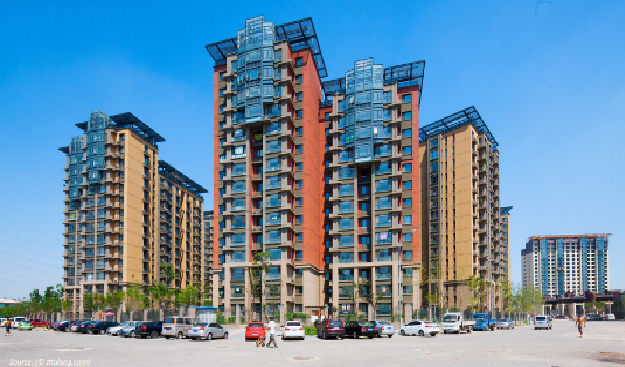Posted: September 19, 2019

Photo: Sun Wei. ©2014 Beijing Institute of Residential Building Design and Research
Between 22 and 24 October, the University of Savoie Mont Blanc in Le Bourget-du-Lac, France, will be the venue for the first meeting about research platform Solar Neighborhood Planning. Professor Christophe Ménézo, who is organising the event, is inviting experts from a wide variety of research fields and business sectors, for example, architects, building developers, heritage specialists, urban planners, representatives for municipalities, utility companies, finance and energy consultants, and software developers, to come to the university grounds to attend the meeting. Solar Neighborhood Planning, which is the latest task set up by the IEA Solar Heating and Cooling Programme (IEA SHC), is expected to run for four years, until 2023.
Professor Maria Wall, who works in the Energy and Building Design department of Lund University in Sweden, is chairing the new research platform. Asked about the focus of the new task, she explained: “Solar neighbourhoods are needed if we want to achieve net zero energy and low carbon cities.” She further emphasised that these new areas will be energy independent and benefit from stable energy prices, which will help make towns and cities fit for the future.
The new platform called Task 63 consists of the four research groups listed below. Its members can draw on a vast knowledge base created for Task 51, Solar Energy in Urban Planning, which ended in 2018.
Solar planning strategies and concepts: The aim of this group is to develop strategies and concepts for new and existing neighbourhoods and offer summer schools to postgraduate students. One summer school had already been organised for Task 51. It brought together an interdisciplinary student group that tackled the challenges of a City in Transition in September 2016 in Berlin.
Economic strategies and stakeholder engagement: This group’s aims are based mainly on the New Urban Agenda endorsed by the United Nations General Assembly in December 2016. The group will analyse conflicts and identify synergies regarding the use of urban surfaces to harvest solar energy and give suitable recommendations for stakeholder engagement in urban planning. The overall goal is to set up financial mechanisms and suggest methods for supporting a transition away from energy market to value-added services.
Solar planning tools: This group is to examine current solar planning tools to find and bridge gaps in their functionality. The focus is on combining the capabilities of different tools and improving processes related to solar planning for neighbourhoods, for example, regarding active or passive solar systems and daylighting. Approaches, Methods and Tools for Solar Energy in Urban Planning, a Task 51 document published in August 2018, already lists some of these programs.
Case studies: Detailed information and lessons learned from successful solar neighbourhood projects will be crucial to creating confidence among builders, urban planners, municipal employees and solar energy consultants. To disseminate this information, the members of the Case Studies group will look for neighbourhood-scale projects, collect information about them, carry out further analyses and test tools and strategies. In addition, they will add these case studies to an interactive map developed in Task 51, which already shows 34 projects. The icons on the map lead to downloadable multi-page flyers that describe attractive solar energy solutions for use in urban and landscape planning.
If you would like to attend the first-ever meeting about Solar Neighborhood Planning, to be held in France from 22 to 24 October, please send an email to Professor Maria Wall: maria.wall@ebd.lth.se